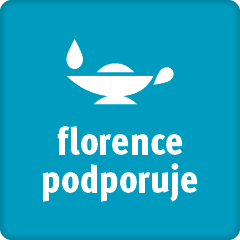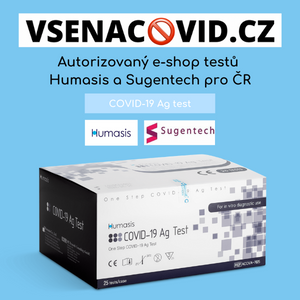


Číslo 3 / 2023
Wound Care
If a wound care nurse is not available, the clinical nurse may be the first caregiver to assess changes in a patient’s skin. Managing theese changes, including wounds, can be challenging, as patients present with diverse disorders and tissue damage can range from superficial to deep. But by applying a few basic principles, starting with a skin and wound assessment, the nurse can simplify the process and determine an appropriate treatment plan.
Assessment basics
Successful wound management starts with a thorough assessment of the wound and periwound skin. The assessment should include the following components.
– Anatomic location. Location can provide information regarding possible causes of the wound. For example, a wound over the sacral area in a bedbound or immobile patient could be a pressure injury, a wound in a lower extremity with accompanying edema could be a venous ulcer, and a wound on the plantar surface of the foot may be a neuropathic ulcer.
– Degree of tissue damage. Determining the degree of tissue damage in a wound will help to guide the care plan and will provide some information regarding the healing trajectory. Wounds can be described as partial thickness, with damage limited to the epidermal and/or dermal layers, or full thickness with damage evident in the subcutaneous layers and below.
– Type of tissue in the wound. Tissue in the wound bed can be described as viable or nonviable. Viable tissue can appear beefy red as with granulation tissue, or light pink in the case of new epithelial tissue. In contrast, the appearance nonviable or necrotic tissue varies: eschar may be black, brown, or tan; fibrin slough is described as stringy or adherent and yellow in color.
– Wound size. Describe the size of a wound according to linear dimensions (length times width). Measure a wound’s length using the head-toe axis; measure its width from side to side. If the wound has depth, measure from the deepest point of the wound to the wound surface using a sterile cotton-tip applicator.
Look at the whole picture
Because wounds do not occur in isolation, wound management involves not only the topical care, but also attention to other systemic or local factors that can be contributing to wound development or impaired healing. Consider the following:
– In the case of pressure injuries, minimizing pressure and shear must be part of the treatment plan.
– With neuropathic wounds, decreasing the risk of further injury, especially in patients with diminished sensation, is an important educational intervention.
– Controlling lower extremity edema in patients with venous ulcers through compression is a fundamental component of a successful treatment plan. Compression dressings and multilayer bandaging systems are the gold standard for venous ulcers.
– Establishing adequate perfusion to the extremity in patients with arterial ulcers is essential to wound healing. Some patients will need revascularization to support healing.
– In patients with skin tears, protecting the skin is a priority, especially in those with fragile skin or other risk factors.
– In patients with a history of diabetes mellitus, glycemic control is an important factor to consider in wound development and wound healing.
Nutrition is another component of an overall wound treatment plan. The prevalence of malnutrition in the hospitalized population has been cited as between 30% and 50%. Nutrition and hydration are essential to normal cellular function and successful wound healing. Assessing the patient’s nutritional status in consultation with the registered dietitian is essential to determine the patient’s potential to heal. A nutritional plan should take into consideration the patient’s overall health and nutritional status and include appropriate nutritional and micronutrient supplementation. For example, in patients with pressure injuries, 30 to 35 kcal/kg of body weight is recommended daily, as is 1.25 to 1.5 g/kg of protein daily and micronutrient supplementation in patients who have a known or suspected vitamin deficiency.
Slovníček
wound – rána; zranění
caregiver – pečující
tissue – tkáň
superficial – povrchový; povrchní
wound assessment – hodnocení rány
to determine – stanovit; určit; zjistit
thorough – důkladný; pečlivý; svědomitý
periwound (peri-wound) – tkáň obklopující ránu
bedbound – upoutaný na lůžko
extremity – končetina
venous ulcer – žilní vřed
subcutaneous – podkožní
nonviable – neživotaschopný
slough – strup
linear dimensions – lineární rozměry
axis – osa
to contribute – přispět; podílet se
to impair – narušit; zhoršit; poškodit
to diminish – snížit
sensation – citlivost, cit
multilayer – vícevrstvý
appropriate – odpovídající; vhodný; náležitý
Source: COX J. Wound care 101. Nursing 2019; 49(10): 32–39. doi: 10.1097/01.NURSE.0000580632.58318.08. (shortened)
Další články v tomto čísle
- Editorial
- Udělení Ceny PhDr. A. G. Masarykové za přínos ošetřovatelství 11. května 2023 v hlavním sále Valdštejnského paláce
- Mgr. Eva Provazníková – vítězka Ceny PhDr. A. G. Masarykové
- Naplňování Koncepce ošetřovatelství
- Sdružené týmy interventů a peerů
- Národní centrum pokračuje v projektu „Čas na změnu“
- Národní chirurgický kongres v Praze
- Výživa v procesu hojení ran u dětského pacienta 10–15 let
- Výskyt poranění kůže u novorozenců v roce 2022
- Novorozenecká kůže, prevence jejího poranění a některé kazuistiky





















